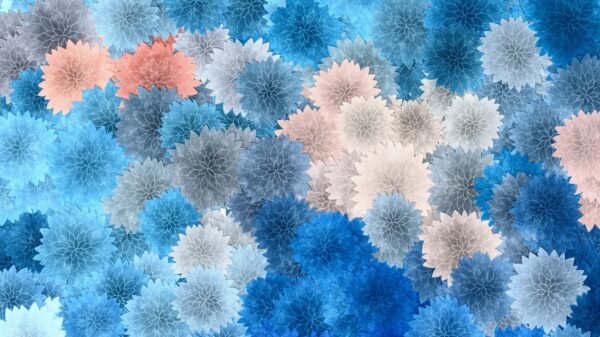Are you tired of creating paintings that lack depth and interest? Do you want to take your art to the next level and create stunning masterpieces that captivate your audience’s attention? If so, then this blog post is for you! In this article, we will explore various techniques for adding texture to your paintings. From simple brushstrokes to complex layering, we’ll show you how to transform dull and flat pieces into dynamic works of art. So grab your paintbrushes and let’s get started on our journey from dull to stunning!
Introduction to Painting Textures
One of the best ways to add interest and depth to your paintings is to incorporate different textures. With a little bit of experimentation, you can create all kinds of interesting effects by painting with various textured materials.
In this section, we’ll take a look at some of the different techniques you can use to add texture to your paintings. Because we’ll start with a few basic methods and then move on to more advanced techniques. By the end of this section, you’ll have all the tools you need to add beautiful texture to your own paintings.
So let’s get started!
Different Types of Textures You Can Add to Your Paintings
In painting, texture refers to the way a surface feels when it is touched. It can also be seen and felt by the viewer and different types of textures can be created by using different types of brushstrokes or by adding thick layers of paint. Some artists even add objects to their paintings to create texture.
There are many different types of textures that you can add to your paintings. Here are some examples:
1. Rough Texture
A rough texture is created by using a brush with stiff bristles or by adding thick layers of paint. This type of texture is often used to depict rough surfaces such as stone or bark.
2. Smooth Texture
A smooth texture is created by using a brush with soft bristles or by applying thin layers of paint. This type of texture is often used to depict smooth surfaces such as glass or metal.
3. Glossy Texture
A glossy texture is created by adding a layer of varnish or gloss onto the painting surface. This type of it gives the painting a shiny appearance and makes it look more realistic.
4. Matte Texture
A matte texture is created by adding a layer of dulling agent onto the painting surface. This type of texture gives the painting a non-reflective finish and makes it look more muted.
Benefits of Adding Texture
Adding it to your paintings can bring a new level of interest and dimensionality. There are many different ways to add texture, each with its own unique benefits.
One benefit of adding texture is that it can help to create a more realistic painting. This is especially true if you’re painting something like landscapes or seascapes, where the addition of rough textures can help to convey the feeling of being in the scene.
Another benefit is that it can help to add a sense of movement to your paintings. This is especially effective if you’re using contrasting textures – for example, smooth and glossy against rough and matt. The contrast creates an illusion of movement, making your paintings more dynamic.
It can also be used to create depth in your paintings. This is done by using light and dark tones of the same color to give the illusion of shadows and depth. This technique is often used in portraiture, as it helps to create a more three-dimensional effect.
Finally, it can simply add visual interest to your paintings. If you’re working with a limited palette, adding textural elements can help to break up the monotony and add some much-needed visual interest.
Techniques for Adding Texture
One of the easiest ways to add it to your paintings is by using a variety of different brushstrokes. You can create interesting effects by using both light and heavy pressure, as well as different types of brushes. Experiment with making long strokes, short strokes, and even dots to see what kinds of one you can create.
Another way to add it is by using a variety of painting mediums. You can try using thicker paints, adding sand or grit to your paint, or even using a palette knife instead of a brush. Experimenting with different mediums will help you find the perfect way to add texture to your paintings.
Finally, don’t be afraid to experiment with other materials. You can add it by incorporating leaves, fabric, paper, or even string into your paintings. Get creative and see what kinds of unique textures you can create!
Examples of Finished Pieces Using Textures
Adding it to your paintings can transform them from dull and flat to stunning and dimensional. There are a variety of ways to add texture, each with its own unique effect. Here are some examples of finished pieces that have been transformed by the addition of textures:
1. Paintings with stippled texture have a soft, delicate look. To create this effect, load your brush with paint and then tap it lightly against the surface of the painting.
2. For a more pronounced texture, try using a textured brush or stamping tool. Dip the brush or stamp into paint and then apply it to the surface of the painting in a random pattern.
3. Another way to add texture is by using found objects such as leaves, feathers, or fabric to create interesting patterns and shapes. Simply place the object on the wet paint and press down gently to transfer its shape.
4. You can also create textures by mixing different mediums together. For example, try adding sand or gravel to your acrylic paint to create a gritty texture.
5. Finally, one of the simplest ways to add texture is simply by using thicker layers of paint. This will give your painting more dimension and make the textures stand out more vividly.
Tips and Tricks for Adding Texture
If you’re looking to add some texture to your paintings, there are a few different techniques you can try. One way to add texture is by using a textured brush. This will give your painting an added dimension and make it more interesting to look at. Another way to add texture is by using different mediums. You can try adding sand, gravel, or even leaves to your painting to create a unique texture. Finally, you can also try using different painting techniques such as impasto or sgraffito to create texture. Experiment with different techniques and see what works best for you!
Conclusion
Learning how to add texture to your paintings can be a great way to give them life and character. From subtle layers of paint on canvas, to adding in sand, glitter or even paper, there are so many various ways you can explore with this technique. With some practice and experimentation, you’ll soon master the art of creating beautiful textured works of art that will be admired by all who see them.










